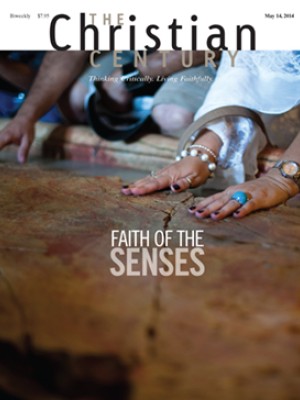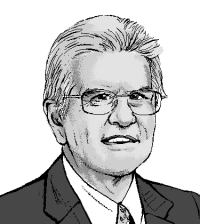Astonishing Assemblies

The United States has spawned many Christian denominations, some of which have gone on to thrive internationally. This year marks the centennial of one of the great success stories, the Assemblies of God. Not only have the Assemblies become a truly global church, but they have won far more followers outside their original homeland than within it.
The AG grew out of the famous Pentecostal revival that began on Los Angeles’s Azusa Street in 1906. In 1914, local congregations met in Hot Springs, Arkansas, to form the denomination. Membership reached only 50,000 by the 1920s, but then it proceeded to grow rapidly. The Assemblies of God in the United States reached 1 million members by 1971, rising to 3 million today. By comparison, the Episcopal Church since the 1960s has contracted from 3 million members to 2 million.
Read our latest issue or browse back issues.
The church’s expansion in recent years is greater than we would think if we just counted signs explicitly using the Assemblies of God label. Many of the country’s thriving megachurches are affiliated with the AG, but use a more generic label. That practice is not intended to deceive but rather recognizes a popular sense that traditional denominational labels are divisive and sectarian. My own working rule is that megachurch signs should usually read “Community Church (really Assemblies of God).”
It is on the global stage, though, that the AG has really boomed. From its earliest days, the church developed a far-reaching missionary operation driven by the common expectation of the imminent end times. In 1914, the denomination pledged itself to “the greatest evangelism that the world has ever seen.” By the late 1980s, the church recorded some 20 million “members and adherents” worldwide. Today, that number has reportedly risen to 66 million. Tens of thousands of congregations are organized under the World Assemblies of God Fellowship.
If the numbers are reliable, the AG family is the largest single Pentecostal denomination and high on the list of all Protestant churches. Those figures are open to argument, however. Church membership is a fairly well-defined category, but what exactly is an adherent? The denomination uses the term for “persons who consider an AG church to be their church home,” a category that leaves plenty of room for subjective decisions.
But even if we doubt specific numbers, the trends are not in doubt, particularly in regard to the church’s shift to the Global South. In official statistics, those 3 million AG followers in the United States are overwhelmed by 28 million in Latin America and the Caribbean and 16 million in Africa.
Brazil offers a dramatic story of growth. Pentecostalism in that country traces its history to several separate missionary efforts around 1910—an Italian-American venture in São Paulo and a mission in Belém by two Swedish Americans, Daniel Berg and Gunnar Vingren. In 1918, the Scandinavian mission coalesced into the Assembléia de Deus.
Despite several schisms over the years, the various successor groups now boast 12 million believers, and their political influence is substantial. Every Sunday, more people attend AG churches in the greater São Paulo area than in the whole United States.
Although Berg and Vingren are scarcely known in the United States, they have left a rich memory in their adopted land. When the Brazilian church celebrated its centennial in 2011, the two men were feted as heroic pioneers.
The AG also has a powerful presence in Asia, chiefly through megachurches that do not explicitly bear the AG label. These include Australia’s important Hillsong Church, with its widely popular hymns and Christian music. In southern India, Chennai’s New Life Church claims a membership running into the tens of thousands. So do the Full Gospel and Bethel churches in Bangalore.
Korean affiliates include Seoul’s astonishing Yoido Full Gospel Church, founded by David Yonggi Cho. For a while, this church regularly held the record as the world’s largest single congregation—but sheer weight of numbers demanded the creation of multiple satellite churches. Although Cho has recently faced serious legal problems over tax evasion, his church continues to boom. Yoido today claims some 900,000 members.
Throughout Christian history, denominations that emerged in one nation or region progressively lost their original identity as they attracted support farther afield. That was the story of the earliest apostolic church and, in later eras, of a group like the Methodists, who had English roots. There is nothing new about the AG growing far beyond its original territory. What is stunning is the pace of change: from tens of thousands of (mainly) Americans in 1914 to tens of millions of believers today, drawn from across the globe.







